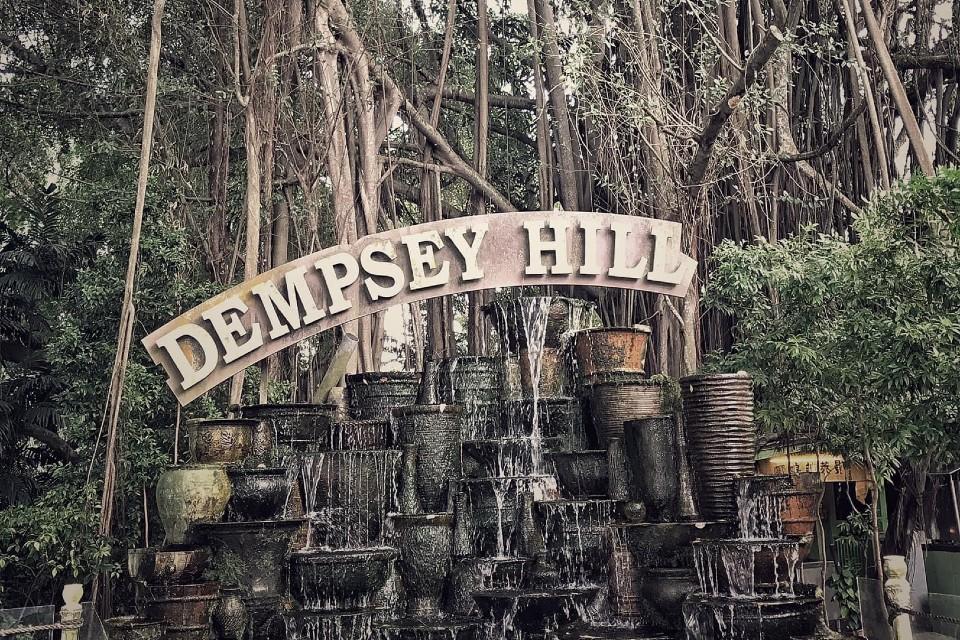I was taking a stroll in the hills of Dempsey and sharing some interesting historical facts about this place. Dempsey Hill was named after a British commander-in-chief, General Sir Miles Christopher Dempsey who lives from 1896–1969.
In the 1850s, Dempsey Hill was known as Mount Harriet, and was part of a huge nutmeg plantation of 1,600 trees, reaching all the way to what is now the Singapore Botanic Gardens.
The plantation was co-owned by British colonial treasurer William W. Willans and Hoo Ah Lay who was better known as Whampoa. A nutmeg-beetle blight forced the estate to close in 1857 and made the land useless for growing. The owners then sold the land to the British Forces in 1860 for a mere 25,000 Spanish dollars.
Around this time, Singapore became an important strategic stronghold for the British Empire. The 213-acre site was turned into Tanglin Barracks to house the British military troops in Singapore. The barracks comprised nine buildings with wooden floors, plank walls and huge thatched roofs. Each building could accommodate 50 soldiers.
Extensive renovations were carried out in 1867 in order to station a European regiment there. The Tanglin Barracks housed its first full battalion – the 80th Regiment of Foot (Staffordshire Volunteers), an infantry regiment of the British Army – when it arrived in Singapore on 17 March 1872. Subsequently, it accommodated 26 officers and 661 men of the sole infantry battalion in Singapore, two artillery batteries, a company of Royal Engineers, and some Sikh soldiers from the Chine Gun Lascars by 1893.
In the midst of World War I on 15 February 1915, during the Singapore Indian Mutiny, 60 mutineers – troops of the 5th Native Infantry of the Bengal Army based at Alexandra Barracks – made their way to the German prisoner-of-war camp near Tanglin Barracks, freeing 300 prisoners and providing them with arms. Then they broke into Tanglin Barracks and killed 13 soldiers – from the British military, Singapore Volunteer Corps and Johor Military Force – and a German prisoner-of-war.
Things took a turn during World War II, when the colonial government surrendered to the Japanese in 1942. The soldiers defending Singapore suddenly became prisoners of war, and the barracks were transformed into storage units for medical supplies and POW housing. But, after the Japanese surrender, the British forces retook control of Singapore and the Tanglin Barracks, making them the General Headquarters of the Far East Land Forces. Once again, British soldiers, officers and their families roamed the grounds of Tanglin until the British withdrawal from Singapore in 1971.
On 10 February 1972, it became the headquarters of MINDEF and CMPB, where young men enlisted for National Service. The move to Tanglin Barracks enabled MINDEF to centralise the ministry and the majority of its key command and support organisations in a single location. MINDEF and CMPB occupied Tanglin Barracks until 1989, when MINDEF relocated its headquarters to Bukit Gombak and the CMPB to Depot Road. MINDEF returned Tanglin Barracks to the former land office in the early 1990s, and it was eventually leased out to the private sector.
Today Dempsey Hill is a vibrant and buzzing lifestyle-and-entertainment enclave nestled in a rustic and quaint setting. The area comprises three clusters - Dempsey, Minden & Loewen - and the buildings and it’s architecture are now protected by Singapore’s conservation guidelines.
The next time you visit this place, think about the history behind the place.











